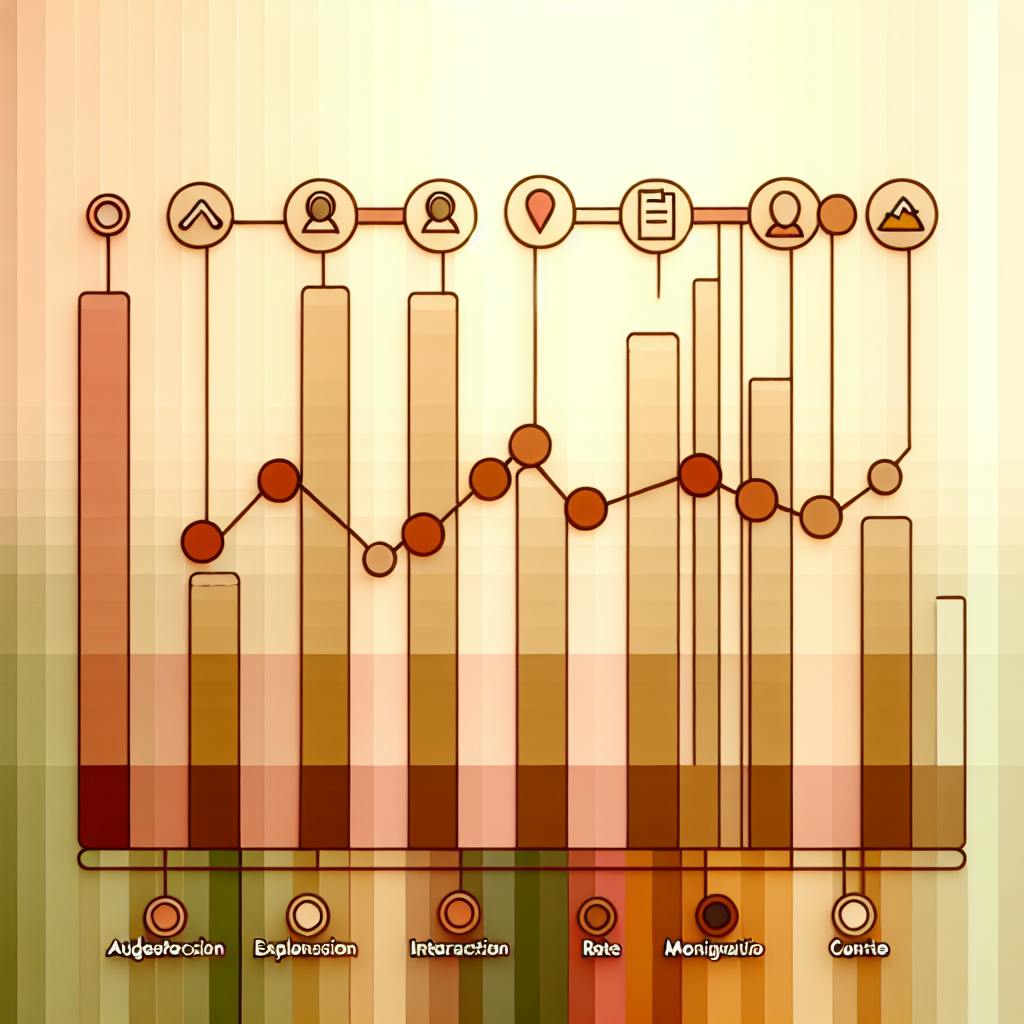Creating a branded hashtag is an effective way to boost your brand's visibility, engage your audience, and build a community on social media. Here are the key steps to create a successful branded hashtag:
-
Define Your Goals and Know Your Audience
- Establish clear objectives (e.g., increase brand awareness, promote a product, foster engagement)
- Understand your target audience's characteristics, preferred social platforms, and content interests
-
Research and Find Ideas
- Study competitors' hashtags and what works in your industry
- Find trending keywords and hashtags related to your brand
- Brainstorm short, memorable options aligned with your brand
-
Evaluate and Choose the Best Hashtag
- Assess options based on length, memorability, uniqueness, and relevance
- Check if the hashtag is already in use or associated with undesirable content
- Compare top options using a table to visualize strengths and weaknesses
-
Promote the Branded Hashtag
- Use the hashtag consistently across marketing campaigns and events
- Partner with influencers whose followers align with your target audience
- Run contests or challenges that encourage users to post content with your hashtag
-
Track, Interact, and Improve
- Use analytics tools to monitor metrics like reach, impressions, and engagement
- Engage with users by liking, commenting, and resharing their content
- Refine your strategy based on data and feedback to maximize the hashtag's impact
By following these steps, you can create a branded hashtag that resonates with your audience, boosts visibility, and fosters a strong online community around your brand.
Related video from YouTube
1. Define Your Goals and Know Your Audience
Before creating a branded hashtag, it's crucial to establish clear objectives and understand your target audience. Ask yourself:
What do you want to achieve?
- Increase brand awareness?
- Promote a specific product or campaign?
- Foster customer engagement?
- Build a community around your brand?
Who is your target audience?
| Audience Characteristics | Details |
|---|---|
| Target Customers | Who are they? (e.g., age, location, interests) |
| Social Media Platforms | Which platforms do they use most? |
| Content Preferences | What type of content do they engage with? |
Having a clear understanding of your goals and audience will help you create a hashtag that resonates with them and encourages them to share content related to your brand.
2. Research and Find Ideas
Study Your Competitors
Look at the hashtags your competitors use. See what works well in your industry. Use tools to analyze:
- What hashtags they use
- How often they post with hashtags
- How much engagement their hashtags get
This research helps you find gaps and ways to stand out.
Use Relevant Keywords
Find trending keywords and hashtags related to your brand. This helps people discover your brand and boosts engagement. Use tools like:
Brainstorm Options
Come up with a list of potential hashtags. Focus on ideas that are:
- Short
- Memorable
- Aligned with your brand
Consider using:
- Wordplay
- Alliteration (words starting with the same sound)
- Rhymes
Keep your target audience in mind. Tailor your brainstorming to their interests.
| Brainstorming Tips |
|---|
| Use your brand name or slogan |
| Incorporate product names |
| Keep it short and catchy |
| Align with your brand identity |
| Consider your audience's interests |
3. Evaluate and Choose the Best Hashtag
Assess Each Option
When evaluating potential hashtag options, create a checklist to assess each one based on these key factors:
- Length: Shorter is better. Aim for a maximum of 2-3 words.
- Memorability: Is the hashtag easy to remember and type?
- Uniqueness: Is the hashtag unique to your brand, or is it already in use by others?
- Relevance: Does the hashtag align with your brand identity and target audience?
Check Availability
Use social media search features and tools to check if the hashtags are already in use or associated with undesirable content. Ensure there are no negative connotations. Research the hashtag on various platforms, including Twitter, Instagram, Facebook, and TikTok.
Compare Options
Compare the top hashtag options using a table that evaluates each one based on the criteria. This will help you visualize the strengths and weaknesses of each option and make an informed decision.
| Hashtag Option | Length | Memorability | Uniqueness | Relevance |
|---|---|---|---|---|
| #MyBrandName | 2 words | Easy to remember | Unique | Aligns with brand identity |
| #MyProductLaunch | 2 words | Easy to remember | Already in use | Relevant to product launch |
| #MyBrandSlogan | 3 words | Hard to remember | Unique | Aligns with brand identity |
sbb-itb-bc761f5
4. Promote the Branded Hashtag
Promoting your branded hashtag is key to boosting its visibility, engagement, and adoption. A well-planned promotion strategy can encourage employees, influencers, and brand advocates to use and share content with the hashtag.
Use in Marketing Campaigns
Consistently use the branded hashtag across all your marketing campaigns, product launches, and events. Integrate it into your social media posts on platforms like Instagram, Twitter, Facebook, and TikTok. This creates a unified brand voice and motivates users to share content related to your brand.
Partner with Influencers
Collaborate with influencers whose followers align with your target audience. Encourage them to create engaging content using your branded hashtag, and re-share or feature their posts on your social media channels. This increases the hashtag's exposure.
Engage Users
Run contests, challenges, or campaigns that incentivize users to post content using your branded hashtag. For example:
- Offer discounts or free products
- Feature user-generated content on your social media channels
This encourages users to engage with your brand and share their experiences.
| Promotion Tactics | Benefits |
|---|---|
| Use in Marketing Campaigns | Creates a unified brand voice, encourages user engagement |
| Partner with Influencers | Increases hashtag exposure to relevant audiences |
| Engage Users with Contests/Challenges | Motivates users to create and share branded content |
5. Track, Interact, and Improve
Keeping an eye on how your branded hashtag is used and engaging with users is key. Use tools to track its performance, interact with those sharing content, and make changes to boost its impact.
Use Analytics Tools
Monitor metrics like reach, impressions, and engagement using tools like Brandwatch, Hashtagify, or Sprout Social. This data shows how well the hashtag is doing and where you can improve. Look for areas to optimize your content and promotional strategies.
Engage with Users
Show appreciation by liking, commenting, and resharing user-generated content with your hashtag. This encourages continued use and builds community. Respond to comments, answer questions, and acknowledge user posts to show your brand cares about its audience.
Refine Your Strategy
Analyze the data you've collected and adjust your approach to improve the hashtag's performance. Address any negative feedback or unintended use promptly. Tweak your content, targeting, and promotional channels to maximize the hashtag's impact. Continuously monitoring and refining your strategy ensures the hashtag's long-term success.
| Tracking and Improving | Benefits |
|---|---|
| Use Analytics Tools | Gain insights to optimize content and promotion |
| Engage with Users | Encourage continued use, build community |
| Refine Your Strategy | Address issues, maximize hashtag impact |
Summary
Creating a branded hashtag is a great way to boost your brand's visibility, get people engaged, and build a community on social media. This guide outlines 5 simple steps to help you do it:
-
Set Clear Goals and Know Your Audience
- Decide what you want to achieve (e.g., increase brand awareness, promote a product, foster engagement)
- Understand your target audience's characteristics, preferred social platforms, and content interests
-
Research and Find Ideas
- Study competitors' hashtags and see what works well in your industry
- Find trending keywords and hashtags related to your brand
- Brainstorm options that are short, memorable, and aligned with your brand
-
Evaluate and Choose the Best Hashtag
- Assess each option based on length, memorability, uniqueness, and relevance
- Check if the hashtag is already in use or associated with undesirable content
- Compare the top options using a table to visualize their strengths and weaknesses
-
Promote the Branded Hashtag
- Use the hashtag consistently across marketing campaigns, product launches, and events
- Partner with influencers whose followers align with your target audience
- Run contests or challenges that encourage users to post content with your hashtag
-
Track, Interact, and Improve
- Use analytics tools to monitor metrics like reach, impressions, and engagement
- Engage with users by liking, commenting, and resharing their content
- Refine your strategy based on data and feedback to maximize the hashtag's impact
FAQs
What is an example of a branded hashtag?
A branded hashtag is a unique hashtag created specifically for a brand, product, or business. Its purpose is to promote the brand. Some well-known examples include:
- #ShareACoke by Coca-Cola
- #LikeAGirl by Always
Where do branded hashtags work best?
Branded hashtags are social tags used to identify and categorize content related to a brand. They function like regular hashtags on platforms like Instagram and TikTok. These hashtags often incorporate a brand's name or slogan (e.g., #GlossierIRL).
How do you create a good branded hashtag?
To create an effective branded hashtag:
- Decide on the type of hashtag (brand name, product, campaign, etc.).
- Brainstorm catchy and memorable options that represent your brand and resonate with your audience.
- Aim for 1-3 words maximum.
- Research to ensure the hashtag is unique and not already in use.
- Consider using techniques like alliteration, rhyme, humor, or wordplay to make it engaging.
| Tips for Creating a Branded Hashtag |
|---|
| Keep it short (1-3 words) |
| Make it memorable and catchy |
| Ensure it's unique and relevant |
| Align with your brand identity |
| Use wordplay, rhyme, or alliteration |
| Research to avoid conflicts |


